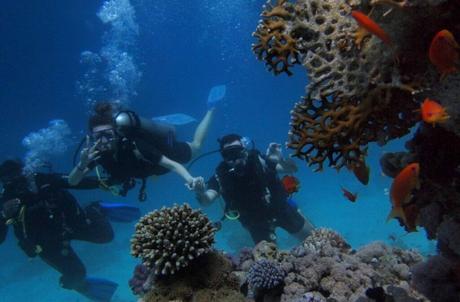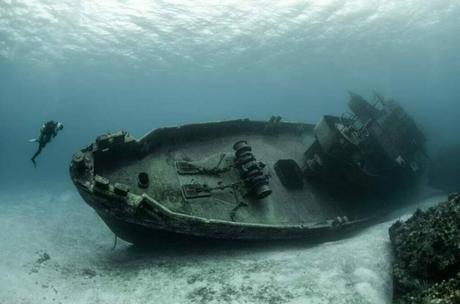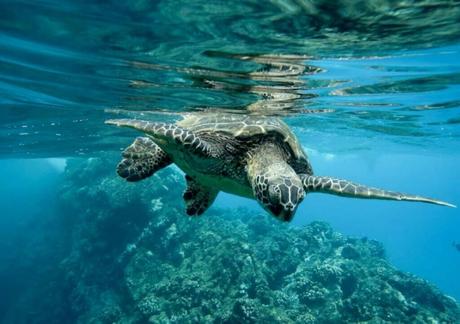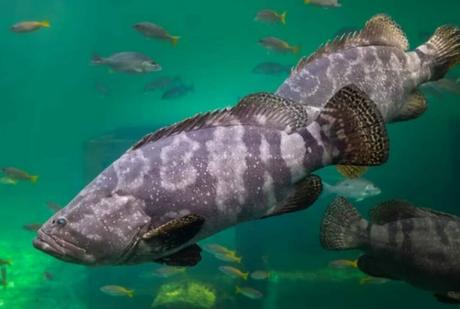Hey there, fellow adventurers! Let me tell you about the hidden gem of Grenada marine life—it’s like diving into a vibrant kaleidoscope!
Imagine yourself surrounded by colorful corals like brain, staghorn, and elkhorn, with graceful sea turtles gliding by. And guess what? Grenada is home to the world’s first Underwater Sculpture Park, a breathtaking sight that blends art and conservation seamlessly. But let’s not forget our responsibility to protect this underwater paradise from threats like climate change and pollution.
Hawksbill TurtleEretmochelys imbricataEndangeredCritically endangered turtle vital for coral reefs.
Spotted Eagle RayAetobatus narinariNear ThreatenedGraceful ray species facing habitat threats.
Blue ChromisChromis cyaneaLeast ConcernSmall reef fish, vital for larger predators; indicates reef health.
Queen ConchLobatus gigasVulnerableLarge marine snail, decline due to overfishing and habitat loss.
Coral ReefsVarious speciesThreatenedVital ecosystems facing threats from pollution, coral bleaching, and human activities.
So, if you’re ready for an unforgettable experience with marine life, come join me in exploring Grenada’s enchanting coral reefs and incredible dive sites. Let’s be eco-friendly travelers and leave only bubbles behind!
Coral Reefs

Grenada marine life is a vibrant tapestry of color and movement, with the island’s coral reefs being the centerpiece. Bursting with a variety of corals like brain, staghorn, and elkhorn, the reefs are an underwater paradise for both marine life and divers. Shimmering schools of tropical fish dance between the corals, while slow-moving sea turtles glide gracefully overhead.
In fact, Grenada is home to the world’s first Underwater Sculpture Park, a hauntingly beautiful artificial reef. These statues don’t just make for unique photo opportunities—they also serve a critical ecological function, acting as surrogate reefs to help restore the natural coral population. It’s a prime example of how art, tourism, and conservation can intersect harmoniously.
Unfortunately, like many coral ecosystems globally, Grenada’s reefs face threats. Climate change, overfishing, and pollution pose significant challenges to these delicate underwater worlds. However, local and international organizations are combating these threats through various conservation projects.
One such effort is the coral gardening initiative, which involves growing corals in nurseries and later transplanting them to damaged areas. Through these programs, damaged sections of the reef are slowly regenerating, providing hope for the future of Grenada’s marine life.
As a visitor, you can support these efforts. Choosing eco-friendly tours, reducing plastic waste, and following responsible diving practices are just a few ways you can help protect Grenada’s precious coral reefs.
Marine Protected Areas

Marine Protected Areas (MPAs) are vital components of Grenada’s marine life conservation strategy. The establishment of these protected regions helps preserve the island’s unique biodiversity while promoting sustainable tourism.
Moliniere-Beausejour Marine Protected Area is one such sanctuary. Spanning over 800 hectares, this MPA hosts a myriad of marine life, from colorful parrotfish to elusive octopuses. Additionally, it’s also the location of the aforementioned Underwater Sculpture Park.
Another prominent MPA is the Woburn/Clarkes Court Bay Marine Protected Area, an important fish nursery that contributes to the replenishment of Grenada’s fish population. Rich in seagrass beds and mangrove forests, it’s a vital habitat for juvenile fish and crustaceans.
The MPAs don’t just benefit the marine life. Local communities benefit too. Through sustainable tourism practices within these areas, communities generate income, creating a win-win situation for both people and the environment.
Visiting these protected areas, you’ll witness Grenada’s commitment to preserving its marine ecosystems firsthand. When exploring these regions, remember to respect the guidelines set to minimize your impact on the environment.
Dive Sites

Grenada marine life is undoubtedly spectacular, and there’s no better way to experience it than through diving. Grenada, aptly nicknamed the “Wreck Diving Capital of the Caribbean,” boasts over 15 wreck sites, each with its unique story and ecosystem.
The Bianca C, often called the “Titanic of the Caribbean,” is a must-visit for experienced divers. This luxurious Italian liner sank in 1961, creating a thriving artificial reef that attracts diverse marine life. Exploring this underwater behemoth is like stepping back in time.
For beginner divers, the MV Shakem is a great starting point. Sunk in 2001 as part of a reef restoration project, this wreck is now home to schools of jackfish, barracuda, and the occasional nurse shark.
Coral Garden, as the name suggests, is a dive site teeming with various coral species, making it an underwater Eden for macro photographers. Its shallow depth and calm waters make it suitable for snorkelers and novice divers alike.
Remember, when exploring these sites, the motto is “take only pictures, leave only bubbles.”
This ensures that the beauty of Grenada’s marine life can be enjoyed by future generations.
Endangered Species

Grenada’s marine life includes several endangered species, the most notable of which is the Hawksbill Turtle. Characterized by its distinct pointed beak and beautiful shell, these turtles play a crucial role in maintaining the health of coral reefs.
Unfortunately, Hawksbill Turtles are critically endangered due to issues like habitat loss, poaching, and accidental catch in fishing gear. But in Grenada, their survival is a community affair. Local organizations are heavily involved in protecting nesting sites and educating the public about their importance.
Similarly, the West Indian Manatee, although rarely seen, is another endangered species that occasionally visits Grenada’s waters. Known for their docile nature, these gentle giants are threatened by water pollution and loss of their seagrass habitat.
Grenada’s endangered marine species include:
- Hawksbill sea turtles (Eretmochelys imbricata)
- Leatherback sea turtles (Dermochelys coriacea)
- Nassau grouper (Epinephelus striatus)
- Elkhorn coral (Acropora palmata)
- Gorgonian sea fans (Gorgonia spp.)
- Queen conch (Strombus gigas)
- Spotted eagle rays (Aetobatus narinari)
- Green sea turtles (Chelonia mydas)
- Caribbean manatees (Trichechus manatus)
Efforts to protect these and other endangered species are ongoing in Grenada. As a visitor, your respect and understanding can go a long way in supporting these conservation initiatives. Remember, a sustainable tourist is one who observes wildlife responsibly, keeping a respectful distance.
Grenada’s marine life is an irreplaceable treasure that needs our collective effort to conserve. Whether you’re a diver, snorkeler, or wildlife enthusiast, the underwater world of Grenada promises an experience that you’ll treasure for a lifetime. Just remember to tread lightly, and leave only footprints – or in this case, bubbles.
FAQ

What sea creatures are in Grenada?
Grenada is home to a diverse array of sea creatures, including Hawksbill and Green sea turtles, Spotted eagle rays, Nassau grouper, and Gorgonian sea fans. The island’s marine ecosystem also supports the presence of Leatherback sea turtles, Queen conch, Caribbean manatees, and Elkhorn coral.
What kind of animals live in Grenada?
Grenada boasts a rich variety of animals, both terrestrial and marine. The island is known for its endemic species, such as the Grenada dove and the Grenada hook-billed kite. Additionally, diverse birdlife, including herons, hummingbirds, and parrots, thrives in its lush rainforests. Offshore, sea creatures like turtles, rays, and a variety of fish species inhabit the surrounding coral reefs, making Grenada a haven for biodiversity.
What animal is Grenada known for?
Grenada is particularly renowned for its critically endangered national bird, the Grenada dove (Leptotila wellsi). This beautiful and elusive dove, with its distinct slate-blue plumage and striking orange eyes, holds significant cultural and ecological importance for the island. Conservation efforts are ongoing to protect and preserve this unique species and its natural habitat.

